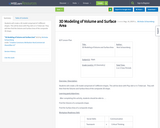
Students will create a 3D model comprised of 3 different shapes. This will be done with Play-doh or in Tinkercad. They will then find the Volume and Surface Area of the composite 3D shape.

Students will create a 3D model comprised of 3 different shapes. This will be done with Play-doh or in Tinkercad. They will then find the Volume and Surface Area of the composite 3D shape.
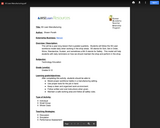
This will be a year-long lesson that is graded quarterly. Students will follow the 5S Lean workforce model daily when working in the shop areas. 5S stands for Sort, Set in Order, Shine, Standardize, Sustain, and sometimes a 6th S stands for Safety. This model will help students with daily reminders on how we should maintain the shop and perform in the shop.
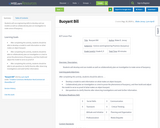
Students will use engineering skills to develop and use models as well as collaboratively plan an investigation to make sense of buoyancy.
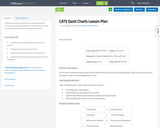
In this lesson, students will learn how to enter data and formulas into an Excel spreadsheet. They'll also learn how to use the data to create and format graphs and charts.
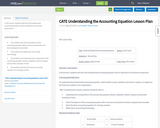
In this lesson, students will learn the fundamental accounting equation and its importance to business transactions.

“Students are introduced to a new routine called Questions About Us. In this version, they figure out how many students are in the classroom today. Students then count objects in different collections in a way that makes sense to them.” Finally, students synthesize their learning by considering careers which require counting skills.

In this lesson, students learn about the structure of picture graphs and bar graphs, the features of graphs that help communicate information clearly, and the information they can learn by analyzing a graph. Students learn that a key is the part of a picture graph that tells what each picture represents. Students contextualize and make sense of the data through the lens of an emerging career in Health Sciences.

“This opening lesson invites students to experiment with expressions and equations to model a situation. Students think about relevant quantities, whether they might be fixed or variable, and how they might relate to one another. They make assumptions and estimates, and use numbers and letters to represent the quantities and relationships. The lesson also draws attention to the idea of constraints and how to represent them.” Through mathematical modeling, students will consider the costs of hosting a pizza party and consider how this relates to a career in the Business Administration-Finance regional career pathway.

In this lesson, students will learn what a scaled drawing is. They will describe characteristics of scaled copies and distinguish between scaled and unscaled drawings. Finally, students will connect their learning to the workplace and identify careers in the Architecture & Construction industry which use scaled drawings. LESSON LINKED BELOW

Students will review the relationship between dollars and cents, identify different types of coins, and use percentages and number lines to understand the value of a dollar. The application of this learning will be done through the lens of in-demand careers in the Business, Management, & Administration career pathway (page 16).

“In this lesson, students see that the principles and strategies they used to reason about scaled copies are applicable to scale drawings (MP7). For example, previously they saw scale factor as a number that describes how lengths in a figure correspond to lengths in a copy of the figure (and vice versa). Now they see that scale serves a similar purpose: it describes how the lengths in an actual object are related to the lengths on a drawn representation of it. They learn that scale can be expressed in a number of ways, and use scale and scale drawings to find actual and scaled lengths.” Students will apply their knowledge of scaled drawings to understand tasks associated with careers in the Health Sciences career pathway (page 28).
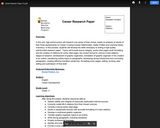
In this unit, high school juniors will research one career of their choice, based on analysis of results of their three assessments on Career Cruising (Career Matchmaker, Ability Profiler and Learning Styles Inventory). In this process, students will develop the skills necessary to writing a high-quality, well-founded research paper. Topics will include source integrity, works cited pages (both formatting and the creation of citations for works cited page), the correct format for various in-text citations, stages of research, development of graphic organizers, translation of graphic organizer in the creation of an outline, transferring outline topics to paragraphs, developing strong introductory and concluding paragraphs, creating effective transition sentences, formatting cover pages, editing, revising, peer editing and submission of final draft.
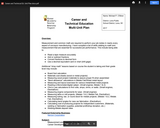
Measurement and common math are required to perform your job duties in nearly every aspect of conveyor manufacturing. I have compiled a list of skills relating to math and measurement that are essential for successful job performance. This include being able to:
Read a tape measure accurately
Add or subtract fractions
Convert fractions to decimal form
Use a decimal equivalent card or chart (drill gage)
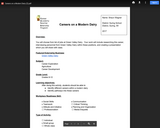
You will choose from list of jobs at Green Valley Dairy. Your work will include researching this career, interviewing personnel from Green Valley Dairy within these positions, and creating a presentation which you will share with class.
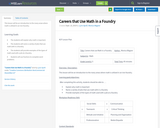
This lesson will be an introduction to the many areas where math is utilized in an iron foundry.
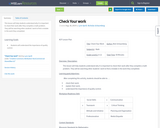
This lesson will help students understand why it is important to check their work after they complete a math problem. They will be searching other students' work to find a mistake in the work they completed.
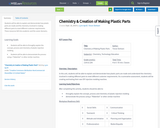
Students will be able to explain and demonstrate how plastic parts are made and the chemistry involved in making different parts to meet different customer requirements. These resources fall into academic and the career domains.
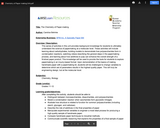
This series of activities in this unit provides background knowledge for students to ultimately understand the science of papermaking at a molecular level. These activities will include learning about carbohydrates, building models to demonstrate how polysaccharides form in condensation reactions, watching videos describing the general steps in the papermaking process, and learning about how additives to pulp can enhance the overall strength of a finished paper product. This knowledge will be used to provide the tools for students to explore papermaking in an inquiry-based format. Upon demonstration of the basics of making handmade paper with a papermaking kit, students will be challenged to change variables to determine which set of parameters results in the highest quality paper. This will truly be engineering design, but at the molecular level.

In small groups, students experiment and observe the similarities and differences between human-made objects and objects from nature. They compare the function and structure of hollow bones with drinking straws, bird beaks, tool pliers, bat wings and airplane wings. Observations are recorded in a compare & contrast chart, and then shared in a classroom discussion, along with follow up assessment activities such as journal writing and Venn diagrams.
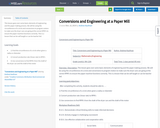
This lesson goes over some basic elements of engineering and the paper making process. We will be using the circumference of a circle and conversions to program motors to make sure the dryer cans are going at the correct RPM's to ensure the paper machine functions correctly. This is a lesson that can be self taught or can be teacher led.